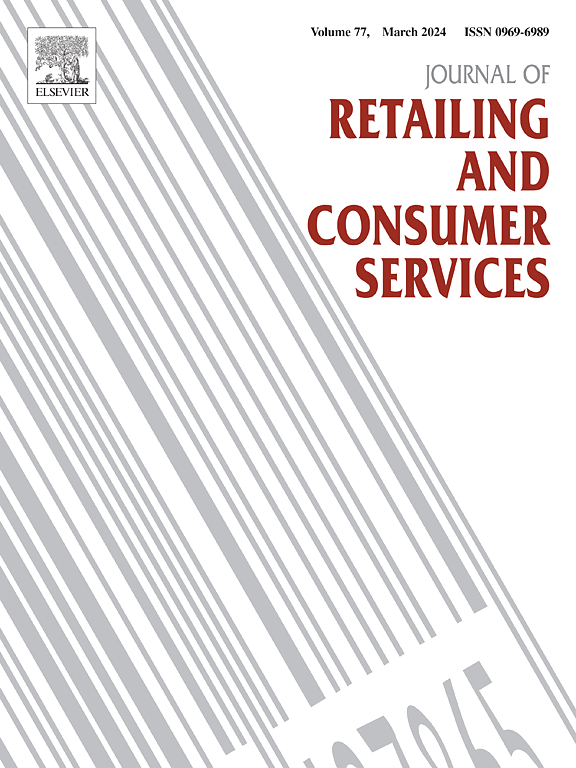从理性耗竭到冲动决策:社交直播电商的多信息源视角
IF 13.1
1区 管理学
Q1 BUSINESS
Journal of Retailing and Consumer Services
Pub Date : 2025-09-12
DOI:10.1016/j.jretconser.2025.104518
引用次数: 0
摘要
随着社交直播电子商务(SLE)中的冲动性购买(IB)激增,现有的研究主要是从情感反应的角度来考察其前因,并且通常将信息源简化为主播本身。然而,这种关注忽视了SLE内部复杂的信息环境以及这些环境如何通过认知机制塑造IB。为了填补这一空白,首先,我们采用德尔菲法确定SLE内部的四种核心信息源类型。然后,我们基于刺激-应变-结果(SSO)框架,利用769个调查回复数据集,利用两种互补方法:偏最小二乘结构方程建模(PLS-SEM)和模糊集定性比较分析(fsQCA),构建并测试了链式中介模型。我们的研究结果表明,SLE的多源刺激可以通过感知超载和决策疲劳的顺序中介效应影响IB,消费者弹性负向调节这种关系。此外,fsQCA结果揭示了多个等终构型路径,每个路径包含不同的信息源刺激组合。通过阐明根植于理性资源耗竭的非情感冲动途径,我们的研究不仅促进了对系统性红斑狼疮中IB机制的理解,而且拓宽了SSO框架和决策疲劳作用的理论范围。本文章由计算机程序翻译,如有差异,请以英文原文为准。
From rational depletion to impulsive decision: A multi-information source perspective in social livestreaming e-commerce
As impulsive buying (IB) surges in social livestreaming e-commerce (SLE), existing studies have primarily examined its antecedents from the perspective of affective responses and typically simplify information sources to the streamer alone. This focus, however, overlooks the complex information environments within SLE and how these environments shape IB through cognitive mechanisms. To fill this gap, firstly, we identify four core types of information sources within SLE employing the Delphi method. We then construct and test the chained mediation model based on the Stimulus-Strain-Outcome (SSO) framework, leveraging a dataset of 769 survey responses and utilizing two complementary methods: Partial least squares structural equation modeling (PLS-SEM) and fuzzy-set qualitative comparative analysis (fsQCA). Our findings demonstrate that multi-source stimuli in SLE can influence IB through the sequential mediating effects of perceived overload and decision fatigue, with consumer resilience moderating this relationship negatively. Additionally, the fsQCA results reveal multiple equifinal configurational paths, each comprising different combinations of information source stimuli. By elucidating a non-affective impulse pathway rooted in rational resource depletion, our study not only advances the understanding of IB mechanisms in SLE but also broadens the theoretical scope of the SSO framework and the role of decision fatigue.
求助全文
通过发布文献求助,成功后即可免费获取论文全文。
去求助
来源期刊
CiteScore
20.40
自引率
14.40%
发文量
340
审稿时长
20 days
期刊介绍:
The Journal of Retailing and Consumer Services is a prominent publication that serves as a platform for international and interdisciplinary research and discussions in the constantly evolving fields of retailing and services studies. With a specific emphasis on consumer behavior and policy and managerial decisions, the journal aims to foster contributions from academics encompassing diverse disciplines. The primary areas covered by the journal are:
Retailing and the sale of goods
The provision of consumer services, including transportation, tourism, and leisure.

 求助内容:
求助内容: 应助结果提醒方式:
应助结果提醒方式:


